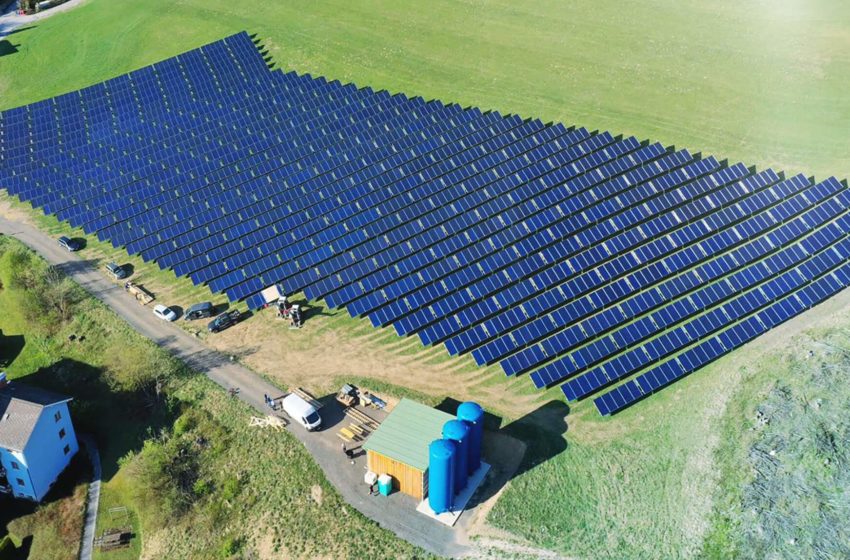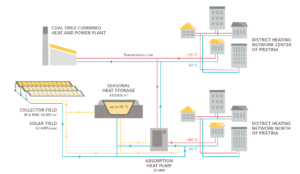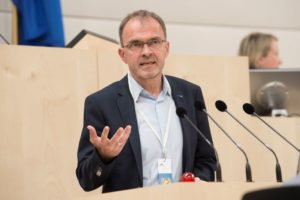Quick Check BIOSOL: New tool helps utilities make the right choices
January 12, 2021
As early as November 2020, national association Austria Solar put a new decision-making tool called Quick Check BIOSOL on its website. At a German-language webinar following the upload, Austria Solar’s Managing Director Roger Hackstock then explained what the tool does and how it works. In essence, the program helps plant owners find out whether their district heating networks could benefit from solar heat integration. The tool requires only a couple of basic system parameters to determine whether solar collectors can supply as much energy in summer as the biomass or fossil fuel boilers grid operators have in place today. You can find a recording of the webinar and Hackstock’s presentation at https://www.solarwaerme.at/webinare The photo shows the 3.5 MWth solar field that was connected to the heat network in Mürzzuschlag , Austria, in October 2020.
Photo: Solid
According to March 2018 data, 1,546 of Austria’s 2,108 biomass plants used for heating are also run in summer despite some drawbacks. For one, the devices produce soot, which hampers efficiency and increases wood chip consumption. Switching to solar thermal can solve these issues, reduce operation cost, and lower air pollution. But instead of immediately turning to detailed – and costly – feasibility studies on solar district heating sites and systems, stakeholders can now use Quick Check BIOSOL for a first, free analysis of whether a retrofit is worth the effort. The tool was developed in partnership with several Austrian experts and was sponsored by solar thermal system supplier Gasokol.
During the webinar, Hackstock fed Quick Check BIOSOL with specifications for both a smaller and a larger heat network to show the ease with which the program can be used. The tool utilises only a dozen or so parameters, including buffer tank volume, annual district heating demand, usable roof surface, grid temperature in summer, boiler type (biomass or fossil) and type of auxiliary heating (heat pump, waste heat or CHP system). Aside from that, the tool will automatically fill in some values, for example, the average collector yield, assumed as ranging from 270 to 320 kWh/m2 if solar energy is to supply all the hot water to the DH grid in summer. Besides the DH use in summer is assessed at around 20 % of annual heat consumption. The return temperature should also not exceed 55 °C in that time, whereas the buffer storage needs to hold at least 100 litres of water per m2 of collector area.
Almost immediately after entering the parameters, a note pops up, indicating a system’s potential for solar heat integration. This means the tool shows how much collector area is needed to replace a boiler partly or entirely in summer and how much land the collectors require if roof space is limited. In addition, Quick Check BIOSOL provides recommendations on how to reduce grid temperatures and how to size the buffer tank. Lastly, users are shown tips on funding opportunities that support large solar systems, plus a list of experienced solar thermal planners.
Austria Solar’s next German-language webinar is titled “Solar district heat – the Future of Heating”.
Organisations mentioned in this article:
Austria Solar’s Quick Check BIOSOL: https://www.solarwaerme.at/biosol-quickcheck/
Webinar recording and presentation: https://www.solarwaerme.at/webinare/
Austria Solar: https://www.solarwaerme.at/ (in German only)
Gasokol: http://www.gasokol.at/en/home
Solid – Solar Energy Systems: https://www.solid.at/en/


